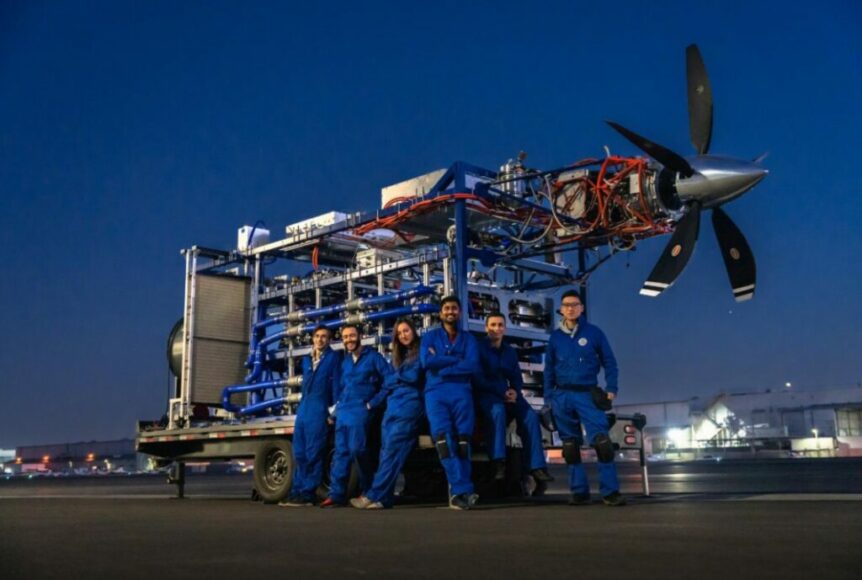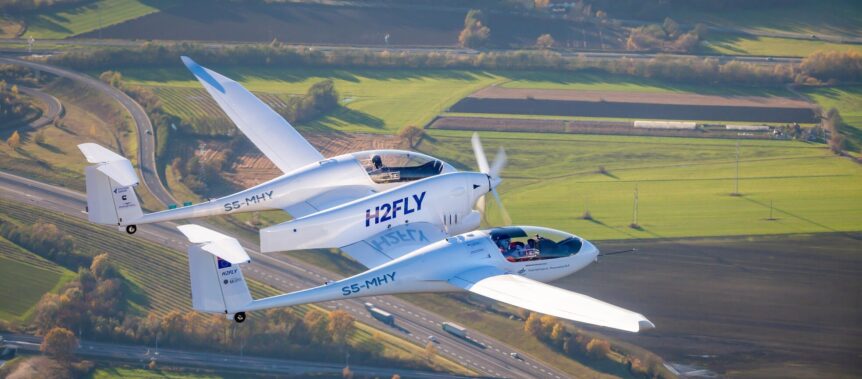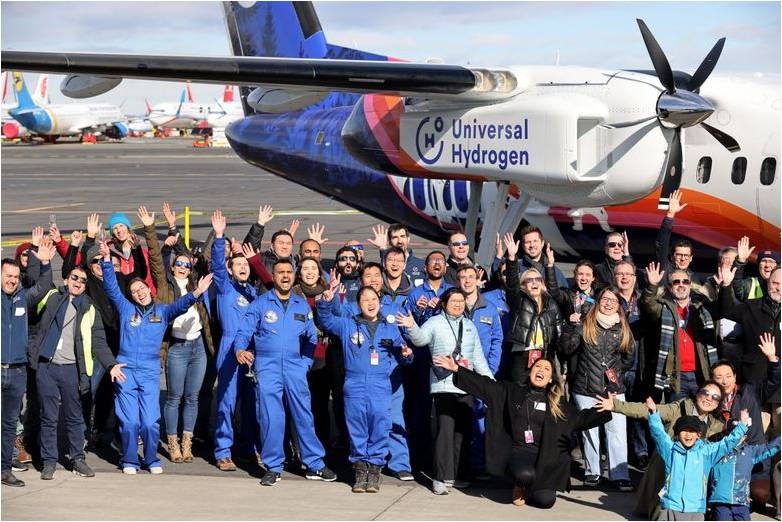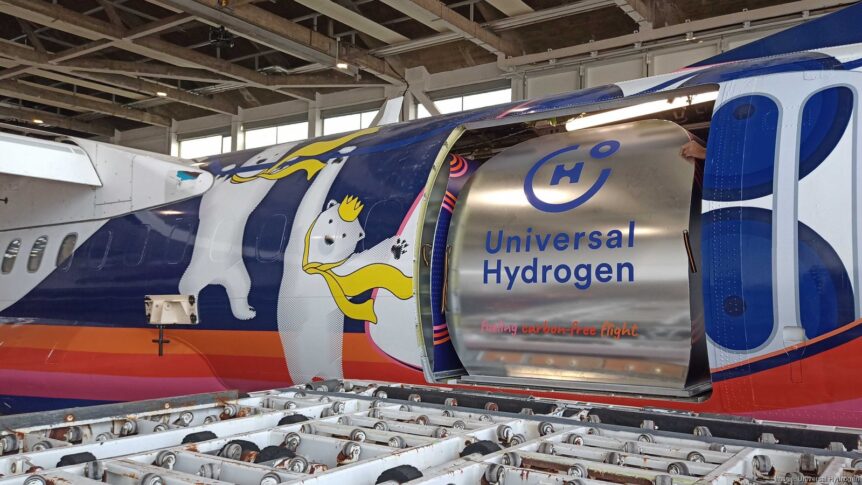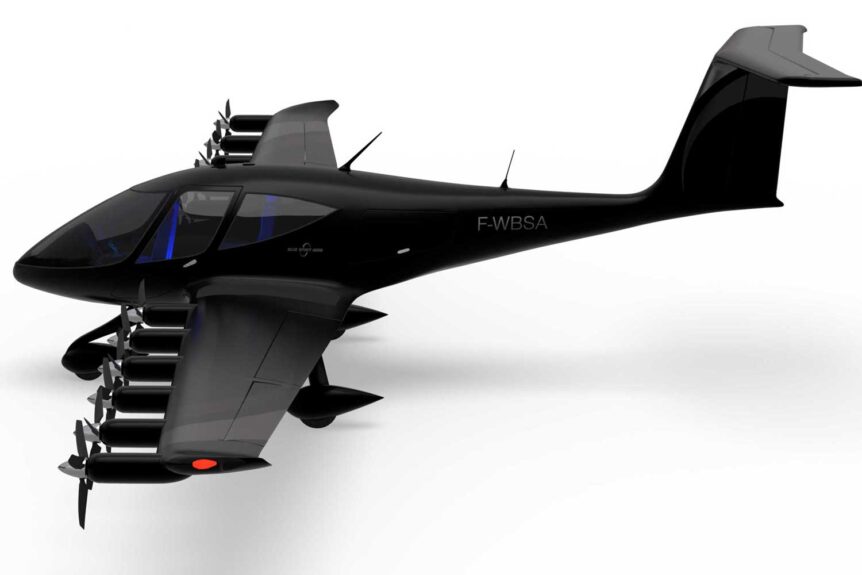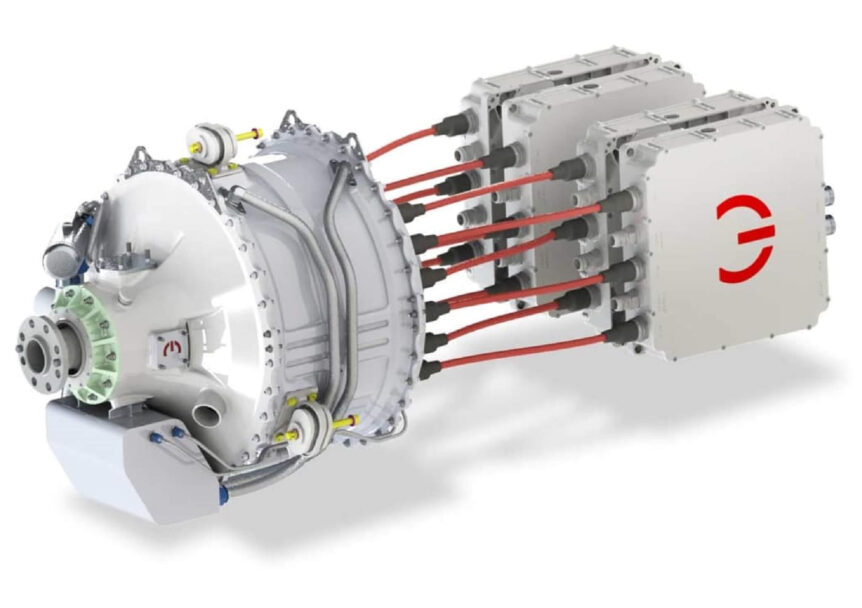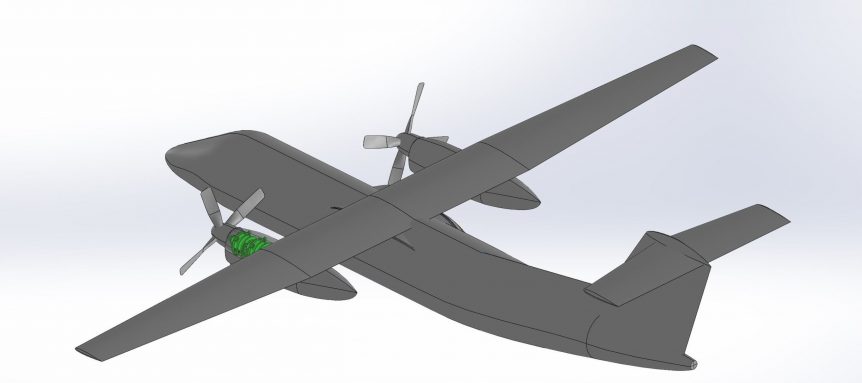In an “end-to-end” demonstration of its proprietary liquid hydrogen module, Universal Hydrogen Co. has successfully run a megawatt-class fuel cell powertrain. “End-to-End,” in this case means “[the] demonstration of a hydrogen molecule moving from our filler/dispenser into our storage module and then into our powertrain is the first time that all the pieces of our product portfolio for regional aviation have come together,” said Paul Eremenko, co-founder and CEO of Universal Hydrogen. “The next step is to upgrade our flight testbed to fly the powertrain fueled by our modules.” In a simplified interface for a complex process, the liquid hydrogen module “is the core of the company’s fuel services offering for aviation.” Looking like any other intermodal freight and airport cargo handling equipment, each module contains 200 kilograms (440 pounds) of liquid hydrogen. Capable of storing it for long periods without boiloff, the module’s internal systems convert the cryogenic H2 into a warm gaseous H2 consumed by the powertrain Designed …
H2Fly Achieves HEAVEN’s Goal
H2Fly has an historic aircraft in its fleet, the HY4, as part of the HEAVEN program to, “Demonstrate the use of liquid, cryogenic hydrogen in aircraft.” Originally the G4, the craft won the NASA Green Flight Challenge in 2011, posting a passenger mile per gallon efficiency of 403.5 – equivalent to driving your loaded Prius from San Francisco to Los Angeles on under four gallons of fuel. Resurrected as the HY4 and flown on gaseous hydrogen, the craft has been reconfigured to fly on liquid hydrogen, expanding its range significantly. According to the HEAVEN program, “The hydrogen-electric ‘HY4’ demonstrator aircraft took off from Maribor, Slovenia, and saw safe and efficient operation throughout multiple flight tests.” Announced September 7, these were the first piloted flights of a liquid hydrogen fueled aircraft. Four flights, including one that lasted over three hours, “Lay the foundation for long-range, emissions-free flight, with liquid hydrogen doubling the range of the HY4 aircraft to 1,500[kilometers], compared to …
Biggest yet from Universal Hydrogen
Universal Hydrogen flew the largest hydrogen-powered aircraft yet at Grant County Airport in Moses Lake, Washington. The DeHavilland Dash 8 was powered on its right side by a MagniX motor and fueled by H2 from a pair of containers in the rear of the fuselage. It made a 15 minute flight to 3,500 feet and settled back to a safe landing It carried “the largest hydrogen fuel cell ever to power an aircraft, “and Universal Hydrogen co-founder and CEO Paul Eremenko “declared the moment the dawn of a new golden age of aviation.” Prep for flight Lightning McClean, Universal’s modified Dash 8, normally flies with up to 50 passengers. The penalty for using H2 for fuel is giving up 10 of those revenue-producing seats, Universal’s Plug Power containers taking up the back rows of the cabin. Other gear included a rigorous evaluation of every component and system, the Dash 8 was ready for taxiing and test flights. Two large hydrogen …
Universal Hydrogen Certified, Ready to Fly
On February 7, 2023, Universal Hydrogen received a Special Airworthiness Certificate in the Experimental category from the Federal Aviation Administration. This will allow their DeHavilland Dash 8-300 to begin test flights. Universal boasts their craft will be the largest hydrogen fuel cell-powered aircraft ever to fly. Up to now, it’s been performing taxi tests and motor runups, getting ready for the big day. On a Mission Universal Hydrogen’s web site opens with this statement: “Our mission is to put aviation on a trajectory to meet Paris Agreement emissions targets by making hydrogen-powered commercial flight a near-term reality.” The coming flight tests are a major step toward fulfillment of that mission. Inclusion of the large hydrogen-carrying modules reduces passenger carrying capacity to 40 seats. But, the modules allow easy loading and unloading and “eliminate the need for costly new infrastructure, with any airport capable of handling cargo being hydrogen-ready.” Paul Eremenko, co-founder and CEO of Universal Hydrogen, explains, “We are simultaneously …
Hydrogen Capsules for Swappable Energy
Hydrogen capsules, quickly swappable and motor pods easily switched on a long wing share a common theme. H2-Mobile, a French web site, shared three stories that share forms of encapsulation, one pointing back to a story your editor wrote about a decade ago. An HUV (Hydrogen Utility Vehicle) from NamX A French-Moroccan company, NamX showed a car co-developed with Pininfarina, and the sleek sedan reportedly can hit 294 kilometers per hour (182 mph) and accelerate from zero to 100 kilometers per hour (62 mph) in 4.3 seconds. Most surprising, perhaps is the car’s method of storing energy. Michael Torregrossa, writing in H2-Mobile, reports that, “Present for the first time at the Paris Motor Show, NamX lifts the veil on its NAMX hydrogen capsule distribution device. Called CapXtores, this new network will begin its deployments in 2024.” Seemingly a larger version of a capsule battery distribution system created for Gogoro, a Taiwanese scooter manufacturer, the NamX concept car can be refueled …
MagniX Ready for New Markets
MagniX, the motor company powering Eviation’s Alice and Harbour Air’s Beaver, is expanding into new markets. Already flying in a DeHavilland Beaver in Canada and being readied for flight on Eviation’s Alice in Arlington, Washington, the company’s motors have many potential airframes to grace. Besides Harbour Air and Eviation, English firm Faradair has chosen MagniX to power its BEHA, a triplane configuration commuter, and Sydney Seaplanes wants MagniX power for its Cessna Caravan Supplemental Type Certificate. On a grander scale, Universal Hydrogen will power its converted DeHavilland Dash 8s with MagniX. Even NASA has awarded funding to MagniX (along with General Electric) to develop “Electrified Aircraft Propulsion (EAP) technologies through ground and flight demonstrations. “ Harbour Air’s Beaver A 1957 de Havilland of Canada Beaver, C-FJOS, had its original Pratt & Whitney P-985 Wasp Junior radial piston engine replaced with a Magnix 750hp (559kW) Magni500 electric powerplant. It first flew on electric power on December 10, 2019. On August 19, …
A Dash of Hydrogen
Getting the Parts Free, Charged for Refills What if future flight had a simple “return the old fuel container and get a new one” business model? Paul Eremenko, founder of California startup Universal Hydrogen, wants to try it out in a Dash 8 airliner equipped with two 2-megawatt motors supplied by MagniX. Poor analogy perhaps, but in his boyhood, your editor had a camera that was sold at the store complete with a roll of film already inside. All you had to do when you took all your pictures was send it by mail, with a check or money order, and a week later, you got the reloaded camera back with the prints and negatives of your pictures. This klunky, pre-digital plan carried over from Kodak’s version 100 years before. Today, with digital photography having supplanted those earlier, more tedious processes, we save on postage and wasted photos. Let’s face it – we all like rapid rewards and instant gratification. …

